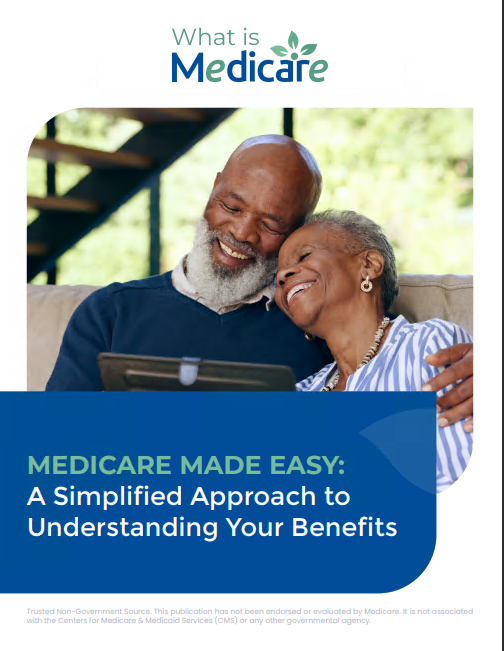Key Takeaways
- Understanding the basic parts of Medicare will help you make informed decisions when enrolling in a plan.
- Navigating Medicare can be easier when you’re aware of the essential terms and coverage options available.
The Essential Medicare Basics You Need to Understand Before You Enroll in a Plan
Medicare, the federal health insurance program primarily for individuals 65 years and older, provides vital medical coverage for millions of Americans. For those approaching eligibility, the Medicare enrollment process can seem overwhelming. With various parts, options, and terminology, it’s important to familiarize yourself with the essentials before making any decisions. This guide will break down the basics, so you can make an informed choice when the time comes.
Medicare Part A: Hospital Coverage
Medicare Part A primarily covers hospital stays and inpatient care. When you are admitted to a hospital, the costs for your stay, treatments, and procedures are generally covered by Part A. It also includes skilled nursing facility care, hospice services, and some home health care.
You may already be automatically enrolled in Part A if you’ve been paying Medicare taxes through your employment. If not, there is a formal enrollment process. Understanding the services covered by Part A can help you avoid unexpected costs. Keep in mind that while this part of Medicare covers essential services, it does not cover all hospital-related expenses, like private rooms or personal care items, which you might encounter during a hospital stay.
Do You Have to Pay for Medicare Part A?
For most people, Medicare Part A does not require a premium because they’ve worked and paid Medicare taxes for at least 10 years. However, if you haven’t met this requirement, you may have to pay a monthly premium to get Part A coverage. It’s important to understand your eligibility status to avoid surprises.
Medicare Part B: Outpatient Medical Coverage
While Medicare Part A covers inpatient services, Medicare Part B covers outpatient care. This includes doctor visits, preventive services, and some medical equipment. It’s designed to cover services necessary for your health that you receive outside of a hospital setting. Many preventive services like flu shots, cancer screenings, and yearly wellness visits are included.
When you are considering Part B, be mindful that it comes with a monthly premium. This premium is based on your income level, so higher-income individuals will pay more than others. Along with the premium, there are co-insurances and deductibles, which vary based on the services you receive.
Should You Delay Medicare Part B Enrollment?
Some individuals delay enrolling in Medicare Part B because they have coverage through an employer. If you are still working and covered by employer-sponsored health insurance, it might make sense to delay Part B enrollment to avoid paying unnecessary premiums. However, you’ll want to ensure your employer coverage meets Medicare’s standards. Delaying enrollment without qualifying coverage could lead to penalties that increase your monthly premium permanently.
Medicare Part C: Medicare Advantage Plans
Medicare Part C, also known as Medicare Advantage, combines Parts A and B into a single plan. These plans are offered by private companies approved by Medicare. In many cases, they offer additional coverage for services that Original Medicare (Parts A and B) doesn’t, such as vision, hearing, and dental care. Part C may also include prescription drug coverage (similar to Medicare Part D).
Though it might be tempting to enroll in a Medicare Advantage plan because of its extended benefits, keep in mind that these plans come with network restrictions. You might need to use doctors and hospitals within the plan’s network for your services to be covered. Always verify if the healthcare providers you prefer are in the network when exploring Medicare Advantage options.
What Should You Consider When Choosing a Medicare Advantage Plan?
If you are thinking about Medicare Advantage, take time to compare the available options. Coverage varies by plan, and the monthly premium can depend on the level of benefits provided. One advantage is that many Medicare Advantage plans have out-of-pocket maximums, which can protect you from high costs in case of medical emergencies. However, check whether your preferred doctors and specialists are part of the plan’s network and consider how frequently you need care to determine whether the coverage is adequate for your needs.
Medicare Part D: Prescription Drug Coverage
Medicare Part D is the prescription drug coverage portion of Medicare. If you take regular medications, this part will help cover the costs of those drugs. Part D plans are offered through private insurers, and each plan has a formulary—a list of covered medications. It’s important to review the formulary of any plan you’re considering to ensure your prescriptions are included.
One critical aspect of Medicare Part D is the “donut hole,” or coverage gap. This refers to a period where you may pay more for prescriptions after a certain spending threshold is reached but before catastrophic coverage kicks in. Although changes to the donut hole in recent years have made it less impactful, it’s still something to be aware of if you have high medication costs.
What Happens if You Don’t Enroll in Medicare Part D?
Enrolling in Medicare Part D is optional, but if you don’t sign up when you’re first eligible, you could face a late enrollment penalty. This penalty is added to your monthly premium and is permanent. However, if you have other credible prescription drug coverage—such as through an employer—you may delay enrolling in Part D without facing a penalty.
Medicare Supplement Plans (Medigap)
Medicare Supplement Plans, commonly referred to as Medigap, help cover some of the out-of-pocket costs that Original Medicare (Parts A and B) doesn’t pay for. This can include deductibles, coinsurance, and copayments. Medigap plans are sold by private companies, and there are several standardized plans to choose from, each offering different levels of coverage.
A key factor to consider with Medigap is that these plans do not include prescription drug coverage. If you want prescription coverage, you’ll need to purchase a separate Part D plan. Additionally, Medigap is only available if you are enrolled in Original Medicare, not Medicare Advantage.
How to Know If You Need a Medigap Policy?
If you find that the out-of-pocket costs from Medicare are too high, a Medigap policy could help reduce your financial burden. For example, if you regularly visit specialists or have high healthcare costs, Medigap could provide significant savings over time. Keep in mind, however, that you’ll need to pay an additional premium for a Medigap policy. It’s important to assess your health needs and financial situation before deciding whether Medigap is right for you.
Enrolling in Medicare: Timing is Everything
The timing of your Medicare enrollment is crucial. If you don’t enroll when you’re first eligible, you may face penalties that could increase your costs. For most people, the initial enrollment period (IEP) starts three months before the month you turn 65 and ends three months after.
If you’re already receiving Social Security benefits, you may be automatically enrolled in Parts A and B when you turn 65. However, if you’re not, you’ll need to actively enroll. Failing to do so could result in delayed coverage or penalties. Special Enrollment Periods (SEPs) are available for individuals who delay enrollment due to employer-provided insurance, allowing them to avoid penalties.
Special Enrollment Periods: Do They Apply to You?
If you continue working past age 65 and have health coverage through your employer, you may qualify for a Special Enrollment Period. This period allows you to enroll in Medicare without penalties once your employment or insurance ends. It’s important to plan your transition from employer coverage to Medicare to ensure there is no gap in your healthcare coverage.
What to Do Next?
Understanding Medicare’s parts and options is the first step in preparing for your enrollment. Take time to evaluate your healthcare needs and review your current coverage. For more detailed guidance, you can reach out to a licensed insurance agent who can answer your questions and provide more specific advice based on your circumstances. You can also visit Medicare.gov to explore available resources and compare plans.
Planning Your Medicare Journey
Enrolling in Medicare can feel like a complicated process, but with the right knowledge, you can make informed choices. Familiarizing yourself with the different parts of Medicare—Part A for hospital care, Part B for outpatient services, Part C for Advantage plans, and Part D for prescription drugs—is essential before you enroll. Consider how each part applies to your needs and whether additional coverage, like Medigap, is necessary.
Contact Information:
Email: [email protected]
Phone: 5055553456










